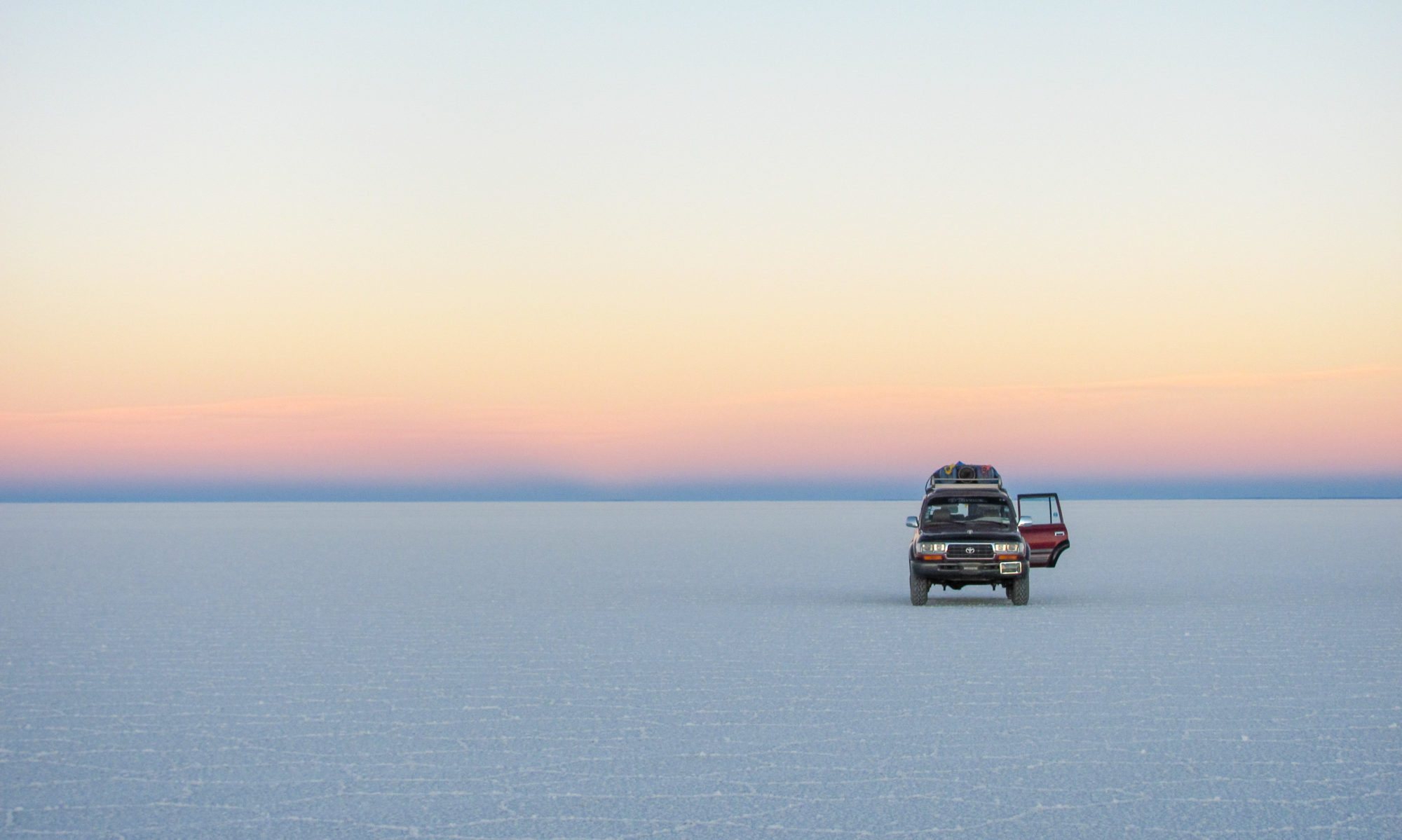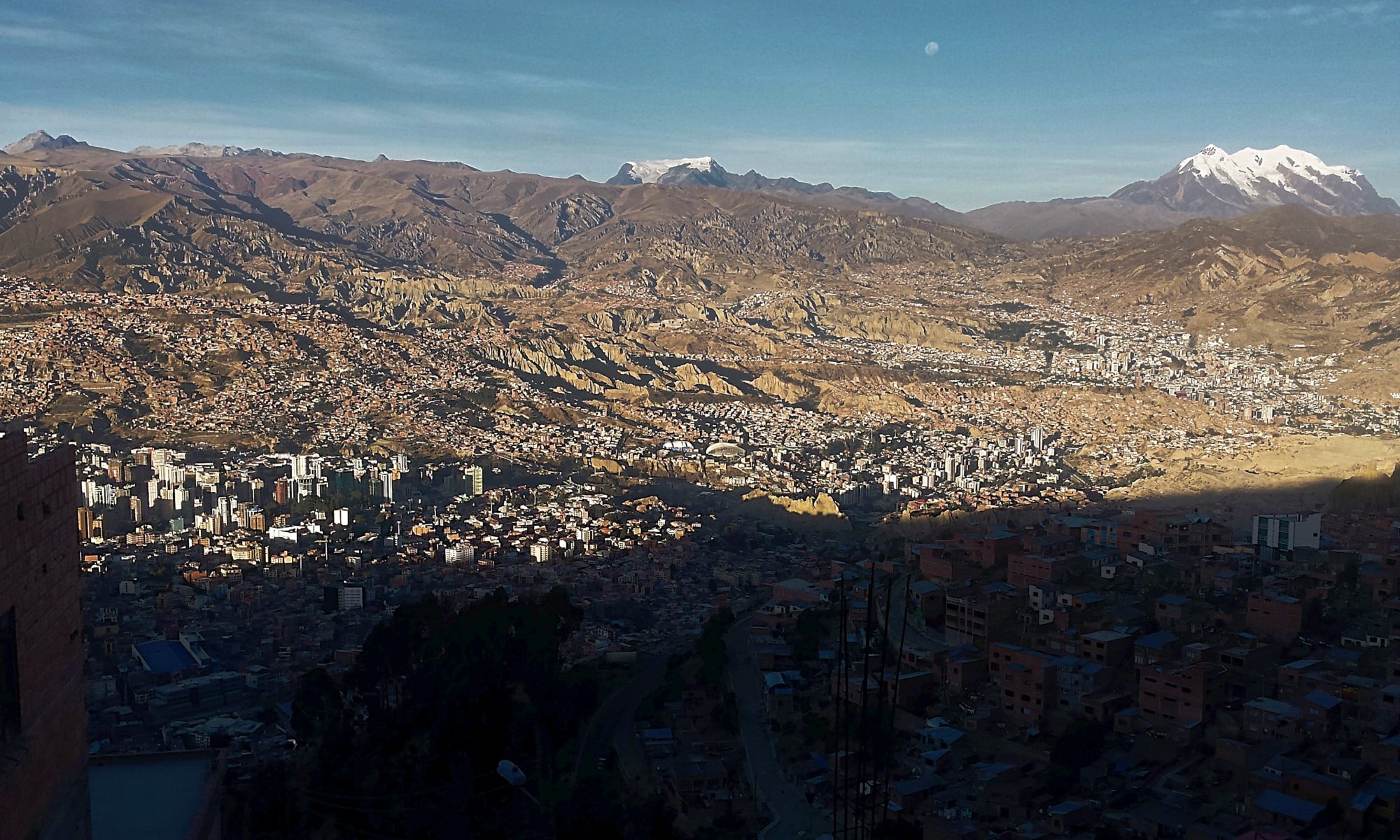La Paz is a wild one. A place where the spiritual world is mixed into every-day life. Where old woman with bowler hats rule the streets and gather respect by wrestling each-other. Where angry farmers enforce their protest with dynamite, llama-fetuses used for witchcraft are traded as easily as fruits or bread and where the altitude will turn the drinking of two beers into your worst hangover ever. La Paz is untamed, rough, dirty but utterly authentic. I loved it.
– Practical Information –
When: Sunny days from April – November so this is when you should go (even though the nights get quite frisky (below zero degrees Celsius!) at this time of the year). From December – March La Paz gets pestered by heavy rainfall, snow- and occasional hailstorms so think twice if you planned your trip in those months. Day-temperatures are fairly consistent throughout the year, about 13 degrees Celsius. Take into account that due to the altitude the sun can feel really hot where shady areas are quite crisp.
In & Out: You can either enter La Paz by airplane or by bus.
Airplane. La Paz’ international airport is located in El Alto, about 14 km from the city center. There is a bus-line but their schedule is really unpredictable and considering taxi’s are dirt-cheap in Bolivia, this will be your safest bet. Just flag a car down by waving vertically when standing anywhere at the side of the road – 1 in 7 cars offers cab-services in Bolvia. Expect paying around 30 bolivianos for the trip. Flights go to all domestic destinations and some international ones. Take into account that you have to pay a departure tax which can cost you up to 25 USD for international flights.
Bus. All buses arrive and depart from the ‘Terminal de Buses La Paz‘. Depending on where your ho(s)tel is you can probably walk to it in 15-20 minutes as it is situated fairly central. You pay a fee for using the terminal, but this is only 2 bolivianos. Buses go to all the bigger destinations in Bolivia plus some crossing the border into Peru (Puno or Arequipa) and Chile.
Budget: Bolivia is cheap, and La Paz is no exemption. Expect to pay 20-40 bolivianos for a dorm and double for a lower mid-range hotel. You can find street-food as cheap as 2 bolivianos (usually a hamburger with fries or some fried meat and potato on a stick) and will be hard-pressed to pay more than 20 for a 3-course meal in a local restaurant. Bolivia on 30 USD or EUR a day? Easily.
– What to do in La Paz –
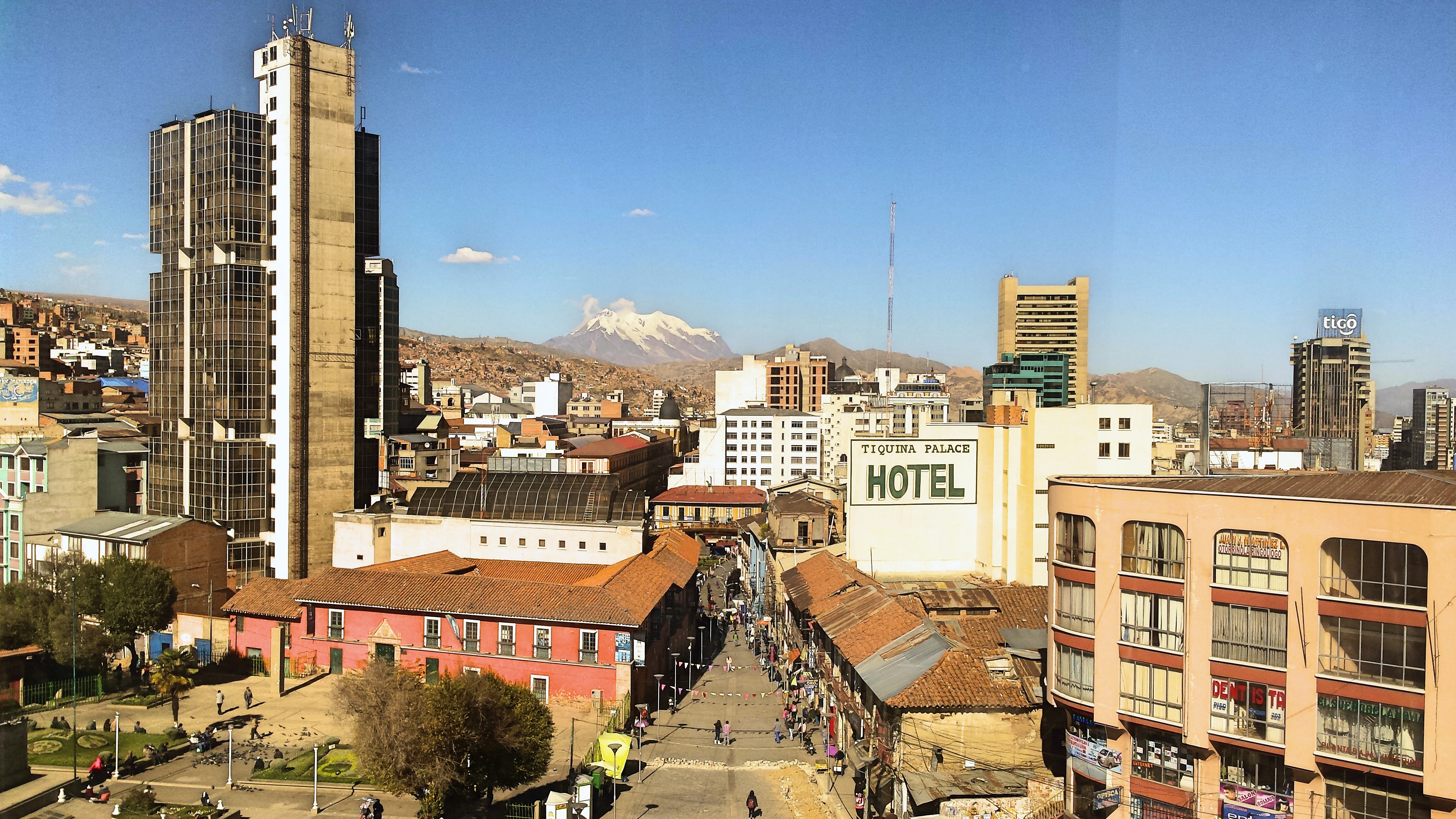
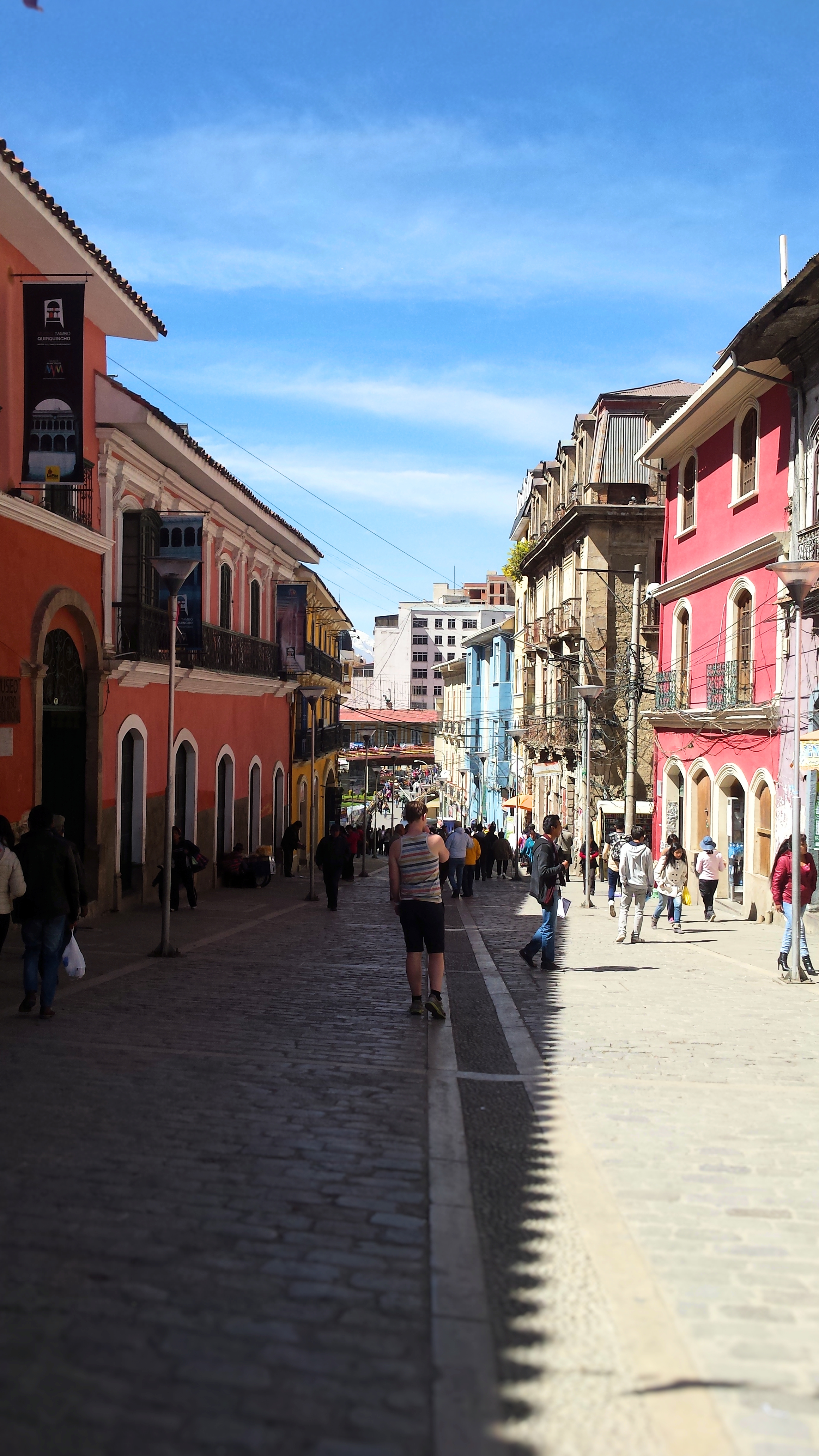
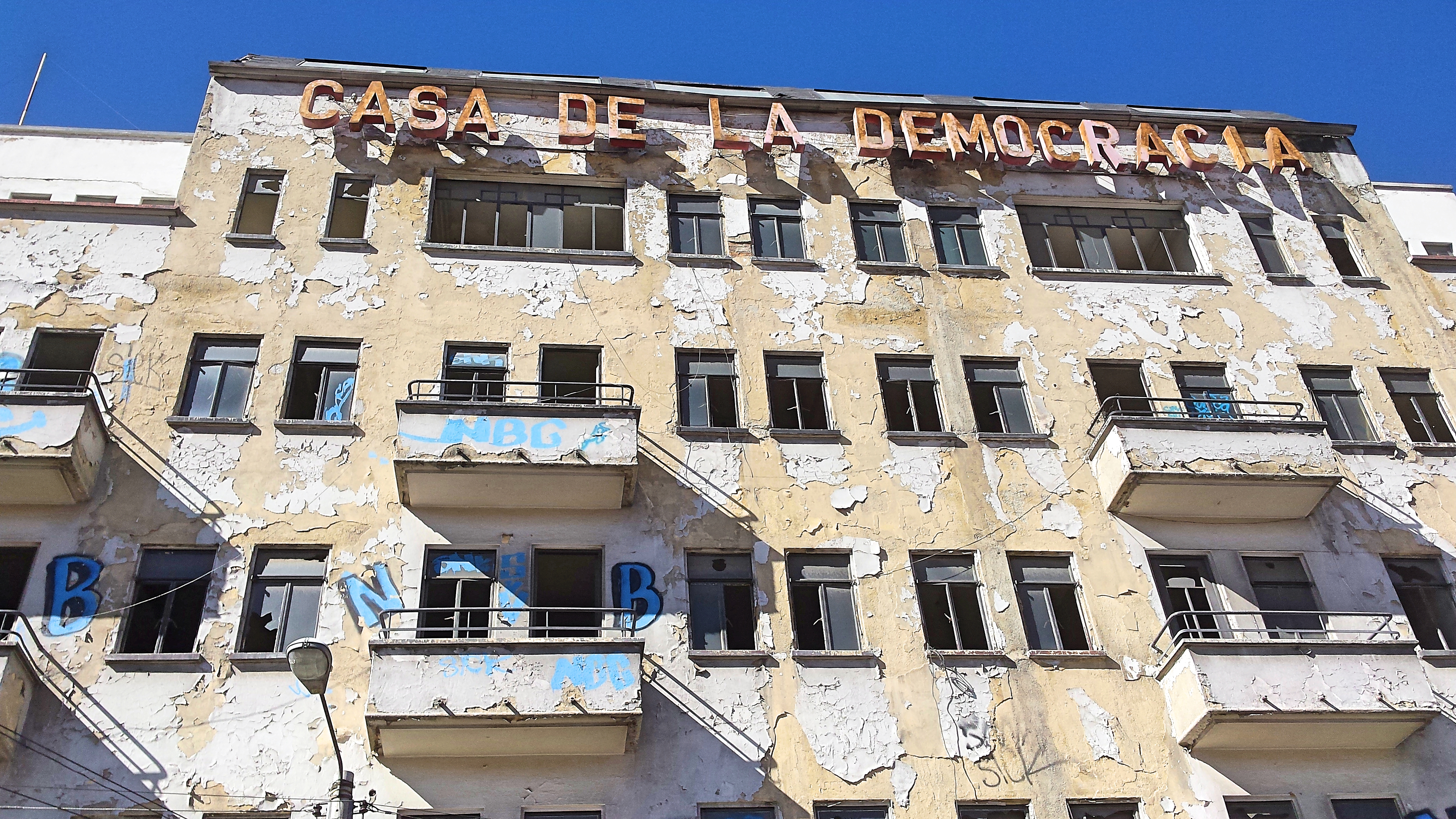
Arriving into La Paz by bus is spectacular, as soon as you cross the last mountain-ridge you will be struck by the impressive sight of a city build-up against steep mountain-ridges in all directions with an elevation-difference of over 500 meters. The streets are so steep that the easiest way to get to the suburbs is by cable-car. The lowest point of the city is situated at an altitude of 3600 meters and therefore it is often called the highest capital in the world, even though Sucre and not La Paz is the official capital of Bolivia.
The best way to explore La Paz is by taking a walking tour and the Red Cap Walking Tour is an excellent choice. It used to be free (tip-based) but due to regulations they had to change that and now the tour costs 3 USD. The guides are fun, speak English well and the tour includes a free Pisco-sour. La Paz is not a city with beautiful architecture or impressive sights to visit so it wouldn’t make much sense to go into detail on that aspect in this article.
La Paz has to be one of the most authentic places I’ve ever visited, even though it receives a healthy influx of travelers. Its rough, dirty at times, under-developed for sure and the people aren’t that friendly but the city lacks all pretense, is utterly sincere and has as local culture that is very district from Modern Western culture. Old woman called ‘Cholitas’ heavily influence every-day life here almost like mob-bosses. They have a set turf and usually own a couple of hotels, restaurants and a few fruit-stalls. People do not only come to their stalls for fruit but also for advice on all matters and getting your fruit from another stall (and thus from another Cholita) is considered close to treason (these relationships pass on to the next generation!). I was very sceptical when I first heard that these Cholita’s wrestle each-other to gain respect. But it quickly turned into amazement when I found out it was not a touristic act but an actual thing. Strong woman (in all aspects) receive massive respect and the best way of showing that (here) is by wrestling.
A few places you should pay a visit to are the San Pedro Prison (next to the San Pedro square – where the Red Cap Walking Tour starts) which some people actually enter by bribing the guard (very dangerous, illegal and not something I recommend doing!). The children and wives of the prisoners are allowed in and out and the prison is divided up into different apartments that come at different price-ranges. If you can afford it, life in this prison does not have to be all that bad. The Hechiceriá is the ‘witch-market’ that is famed by many. I wasn’t impressed. Do not expect a full-fletched market: it are just three street-stalls that sell strings of garlic, charms in a bottle and fetuses in glass jars. The cool thing is that local people actually buy these wares.
Cholita Wrestling
So not only is Cholita wrestling a real thing, you can actually go and see it. The best wrestlers are considered local heroes that draw massive crowds to the arenas of El Alto (a chaotic city that merged with the suburbs of La Paz and gives host to the airport). The scene can be quite rough so I do not recommend going solo, but if you accompany yourself with a few other travelers you will be fine. Alternatively you can book a tour for an accompanied visit, but for me this felt a bit too much like paying for a babysitter. Be prepared for crowds that go absolutely insane and wrestlers that at times jump out of the arena, kiss you full on the mouth and then jump back in to continue the match. In Cholita Wrestling, nothing is out of the ordinary.
Taking the Cable-cars
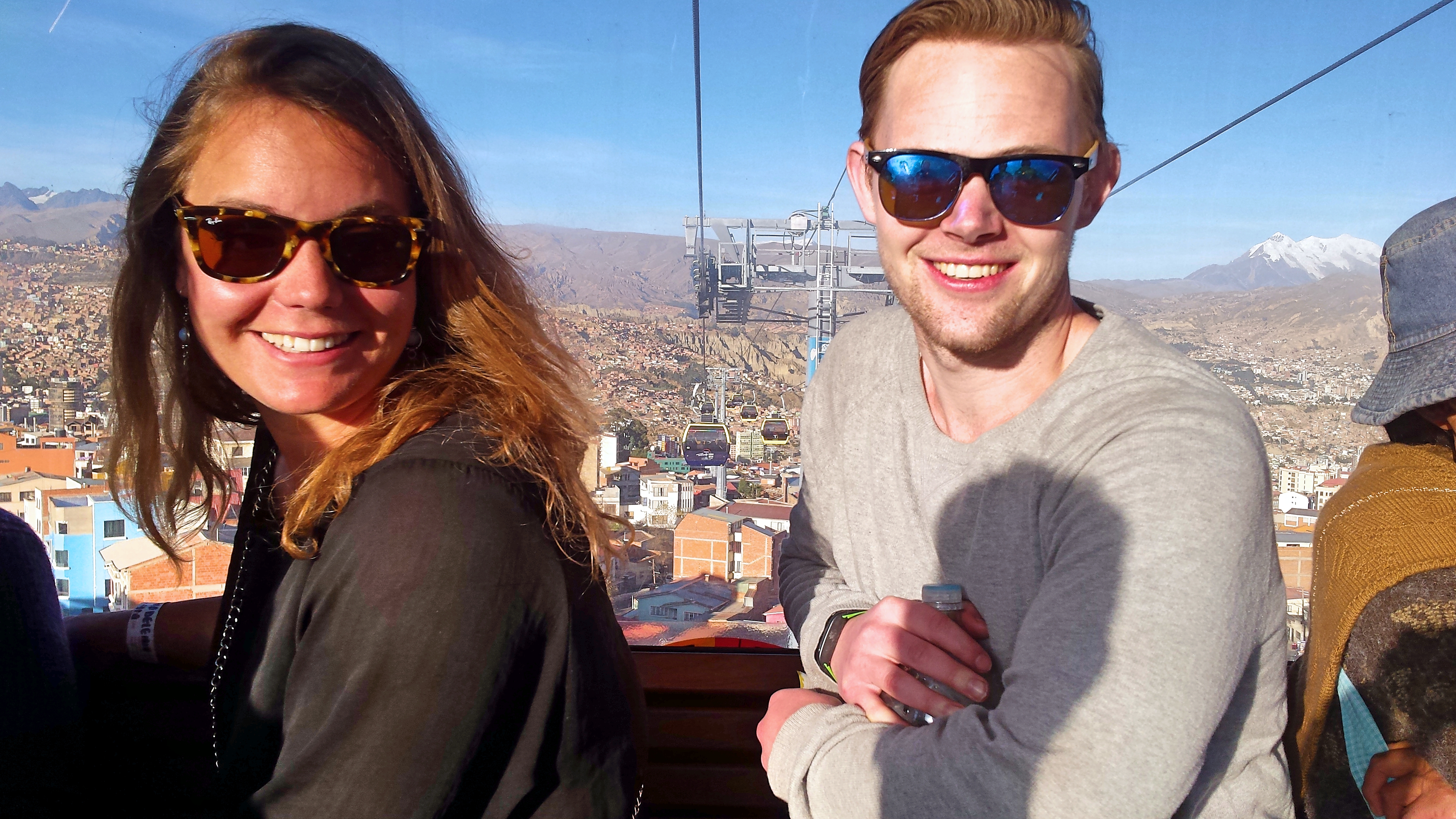
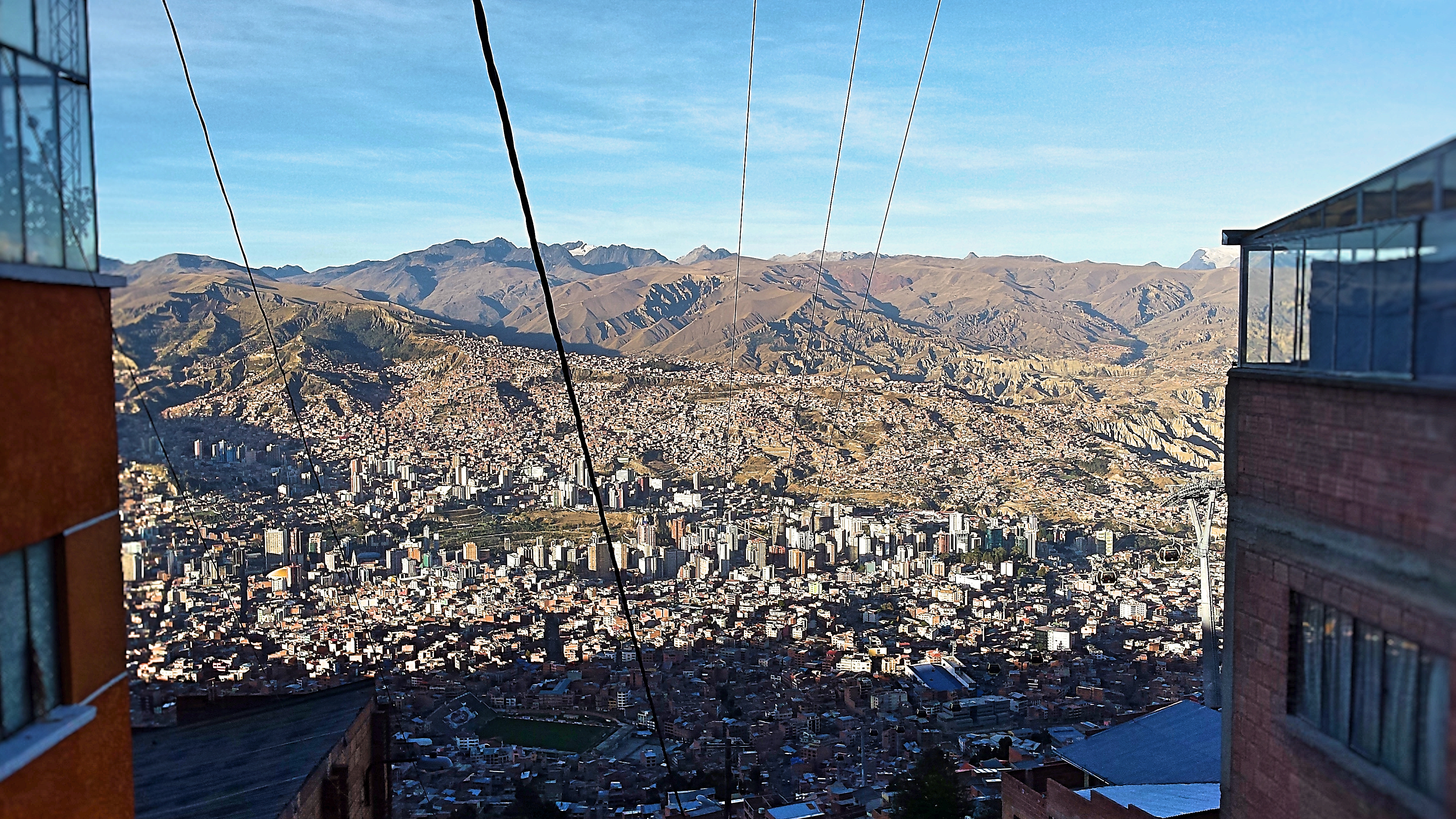
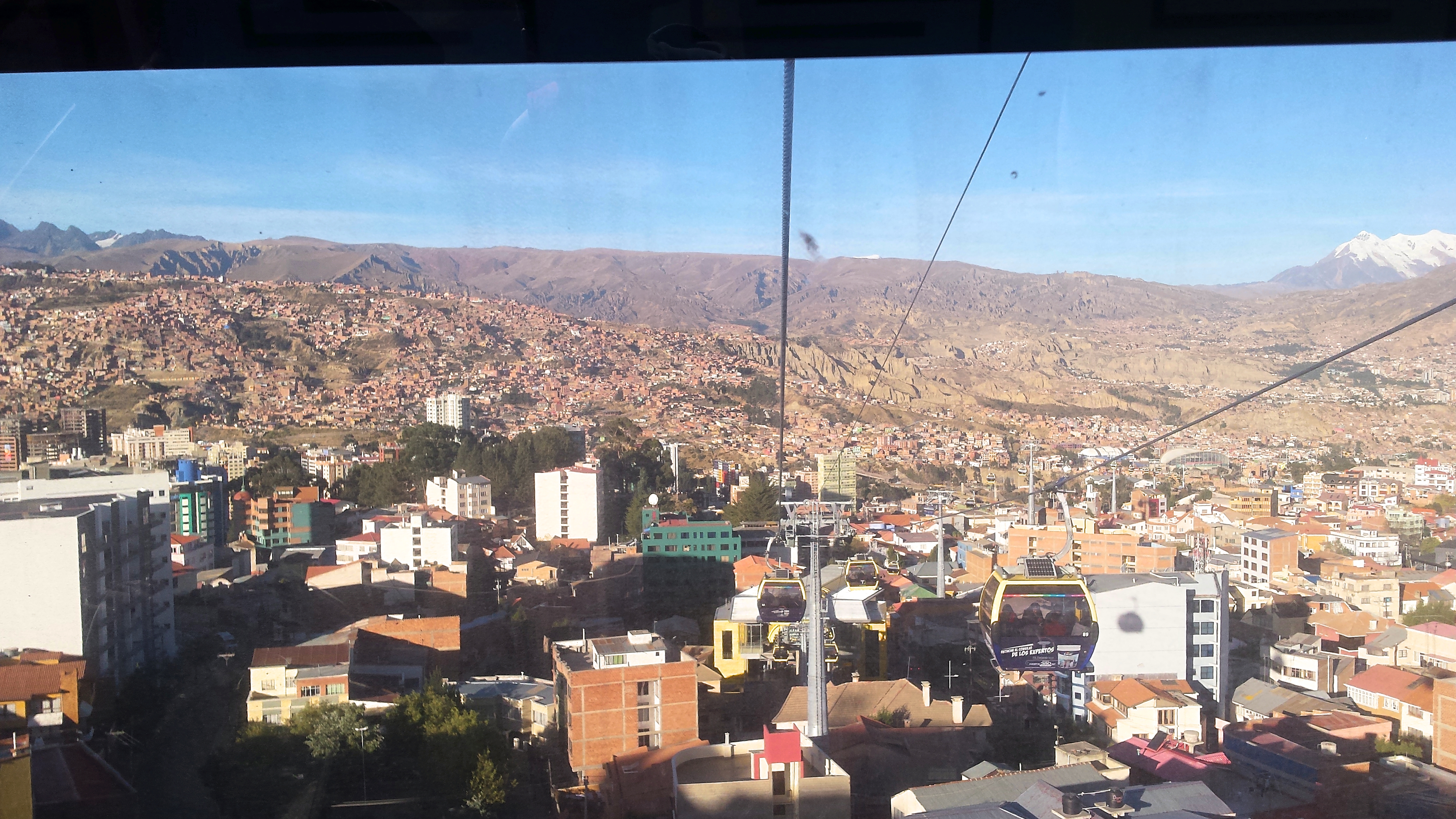
The Cable-cars that stretch to all the suburbs of La Paz are part of the public transportation system and therefore utterly cheap. You pay 3 bolivianos for a single 3 KM ride on the trajectory that takes about 10 minutes. Slowly rocking over the roof-tops watching the sun decent behind the mountain-ridges is the perfect way to spend a late afternoon (but bring a sweater!).
There are 3 main lines, the Red, Yellow and Green line. I took the Yellow and Red – which were recommended to me as being the most scenic routes around. The destinations aren’t really something, so after walking around for ten minutes and snapping a pic from the top that is slightly less awesome than the ones you took from within the cart you’ll probably wanna head straight back down. The cars continuously run between 5AM and 10PM every day. Check the schedule below to find out from where they leave (easiest to take taxi to the start for approx. 5 bolivianos).
| Line | End-terminals | Lenght | Travel Time | Stations |
|---|---|---|---|---|
| Red Line | Estación Central – Jach’a Qhathu | 2.4 km | 10 min | 3 |
| Yellow Line | Libertador – Qhana Pata | 3.9 km | 14 min | 4 |
| Green Line | Irpavi – Chuqui Apu | 3.7 km | 17 min | 4 |
Death Road, the Yungas and Trekking
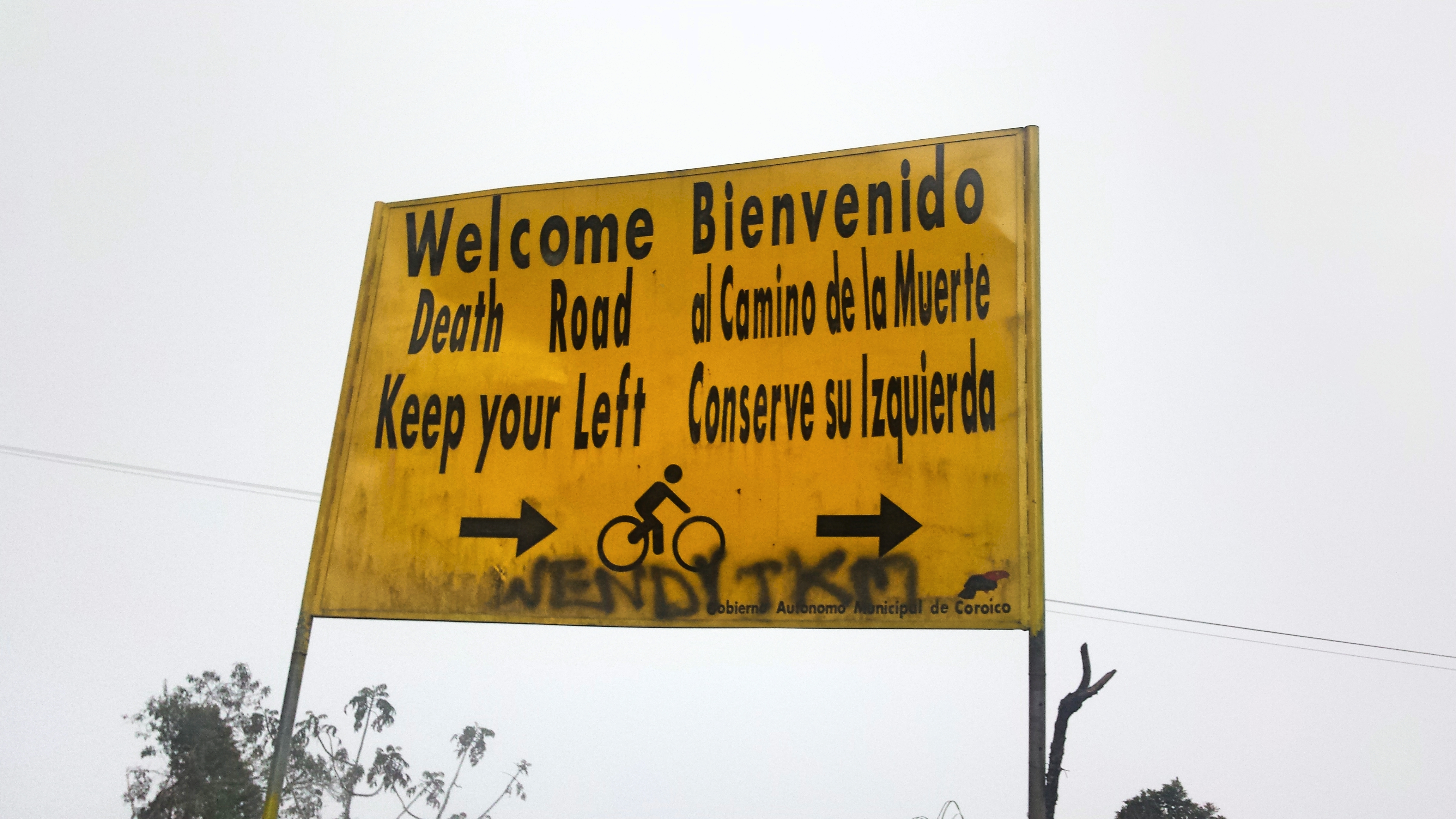
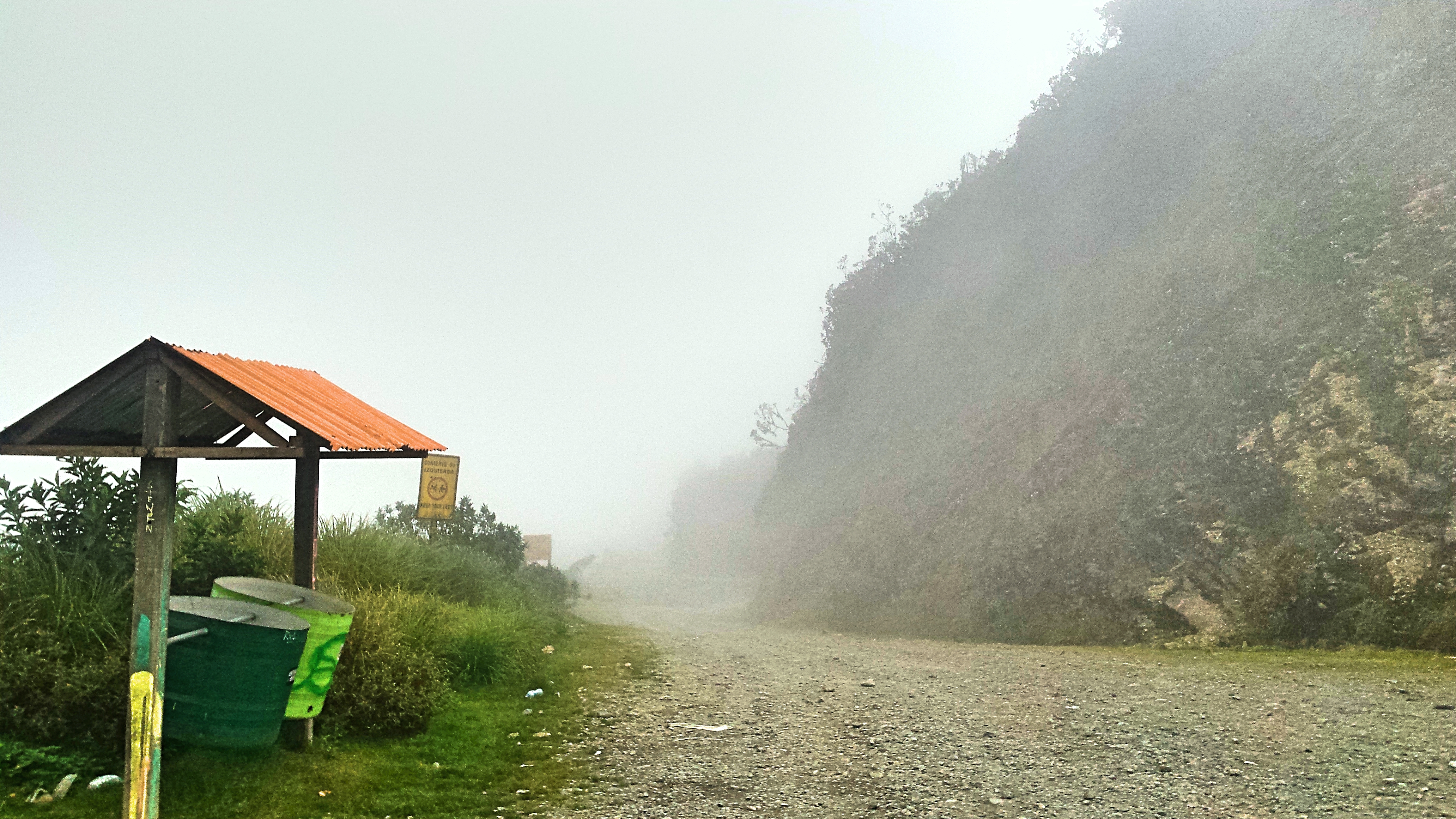
One of the things that any adventurous traveler MUST do when in La Paz is down-hilling Death Road. The road used to claim hundreds of lives every year – hence the name – but after a tunnel for industrial traffic opened, the numbers dwindled. Nowadays it is mainly used by down-hill bikers braving the dirt-road that swings along deep ravines with hairpin turns and the occasional wet-crossing. The down-hill ride is a massive thrill, however the danger is still very real! Every year a few people go over the edge and rarely survive it. I met a couple of travelers that broke their wrists or elbow on this route. Do not book with the cheapest company you can find to avoid going out with crappy gear and stay cautious, especially if you are an inexperienced biker. Next week I am writing a whole article about Death Road along with recommendations and the like. I’ll put a link here as soon as it goes online!
The Death Road route ends in the Yungas, where the Andes meets the Amazone. The Yungas are also the gateway to Rurenabaque from where you can explore the Bolivian parts of the Amazone-jungle. You’ll have the option to continue onwards after your ride instead of traversing back to La Paz. You can go by bus or by boat. The boat takes 3 days but is well recommended as the bus-ride has a real bad reputation. The road-conditions are very bad, the drivers often drunk and the ride takes approximately 18 hours. There are also occasional flights to Rurenabaque from El Alto airport.
La Paz also is a great base to use for trekking and mountain-climbing in the area (El Chorro is quite popular) however if you are not carrying your own gear and lack experience you might be better of trekking and mountaineering around Arequipa or Cusco in Peru as the industry and the routes are rougher and less developed here. Good gear and guides are hard to get by and may come at a (for Bolivian standards) steep price.
– Eat and Sleep –
The Bolivian isn’t the best of cuisines and if you are looking for fine dining you’d be better off in Sucre than in La Paz. Try the Mercado 16 de Julio (the biggest market in La Paz) for delicious fried chicken (‘pollo‘) and Avocado-Sandwiches (‘Sandwiche de Palta’). Great lunch-time Empanadas with all kinds of filling can be found around the Plaza de Estudiante (near the San Pedro Prison) for only 1 or 2 bolivianos each.
The most luxurious hotels in La Paz offer oxygenated rooms which can be incredible comfortable but not really necessary if you acclimatize properly. If you are feeling sick from the altitude these hotels are also able to help you with some oxygen from small tanks. Casa Grande is generally considered as one of the top-hotels in La Paz. Incredibly charming and still quite luxurious is the boutique Midtown La Paz hotel.
The best places to meet other travelers and save a few bucks however are of-course hostels. There are two stand-outs in La Paz which are Loki La Paz and the Adventure Brew Hostel. Loki offers comfortable beds and an awesome bar overlooking the city. The manager and team are great fun and Loki’s bar is definitely where the party is. The food served here is also good but heavily over-priced. A night at the Adventure Brew Hostel comes with a complimentary home-brewed craft beer but this of course is calculated into the price. This hostel combines a hostel with a B&B making it ideal for couples that want to meet other travelers but also like the privacy of a private room in a slightly quieter environment.
